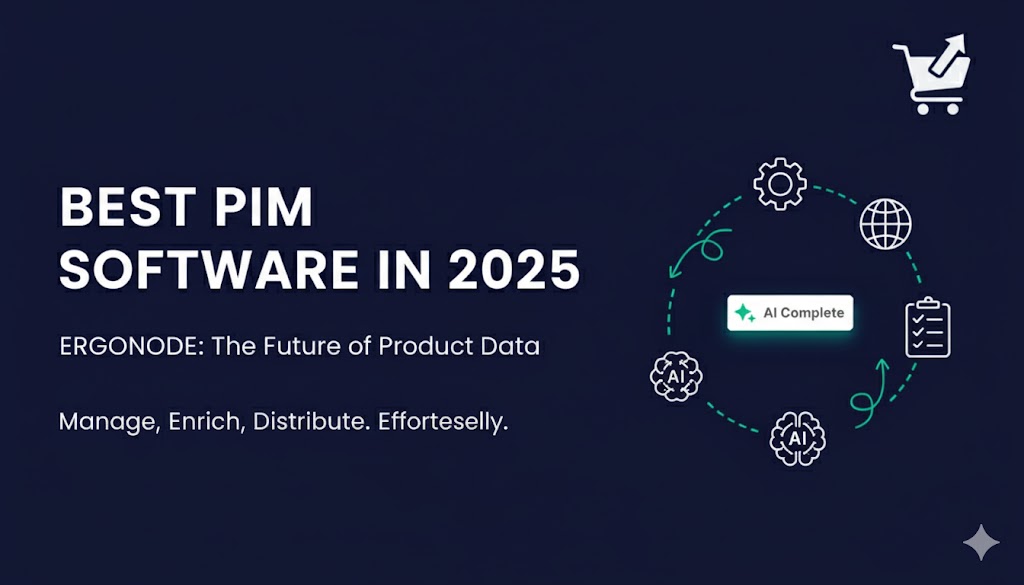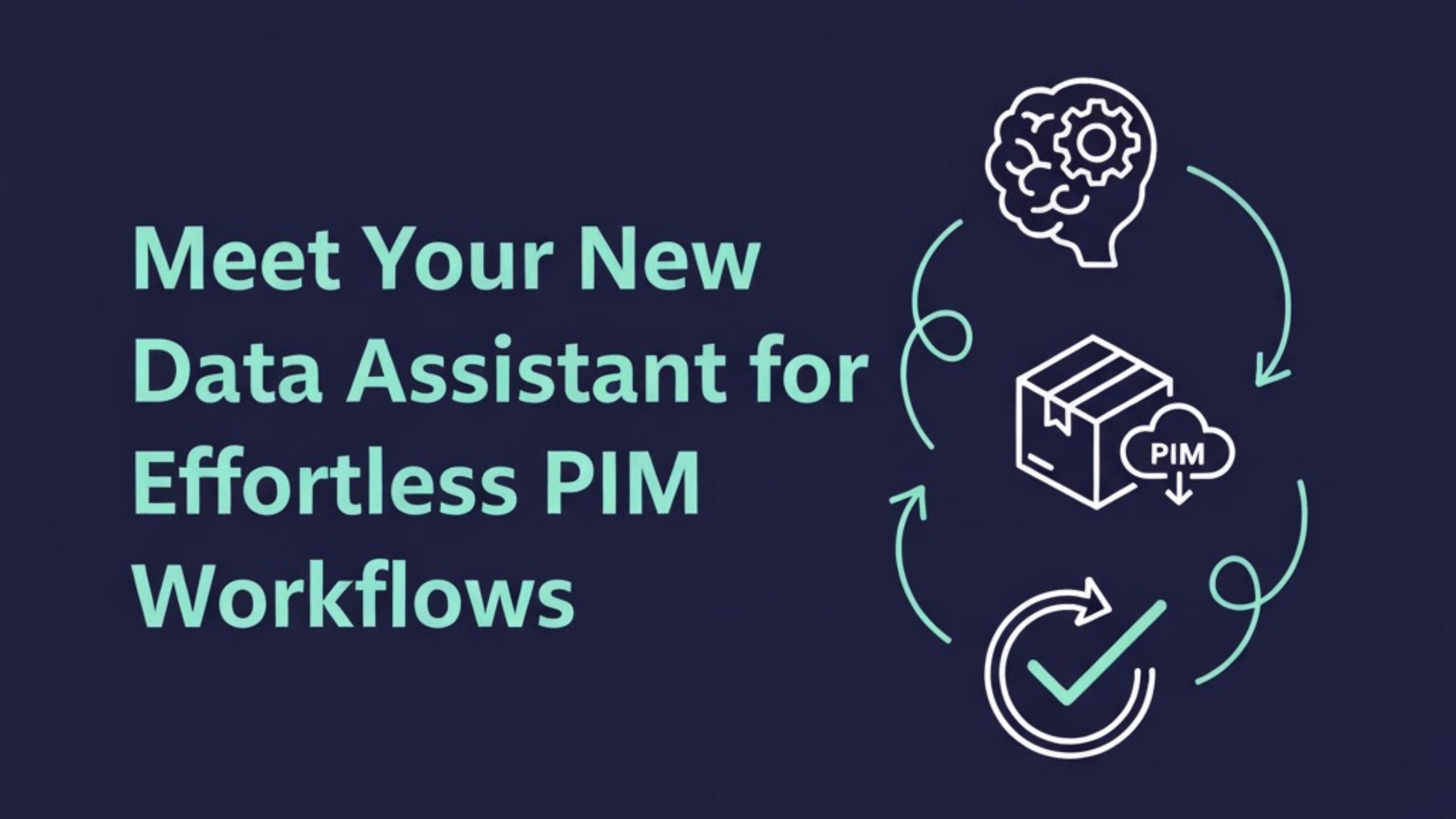The Best PIM Software: Top 10 Product Information Management Systems in 2025

In today’s fast-moving digital commerce landscape, managing consistent and enriched product data across multiple channels has become a strategic necessity. As online retailers, manufacturers, and distributors scale globally, the need for efficient Product Information Management (PIM) tools has never been greater.
Finding the best PIM software in 2025 means looking beyond simple product data organization — it’s about enhancing collaboration, automation, and brand consistency across all digital touchpoints.
Below, we’ve listed the top 10 PIM systems to consider this year, each offering unique strengths and capabilities to match different business needs.
Best PIM Software in 2025 – Our Top 10 Picks
These are the top PIM solutions shaping digital commerce in 2025. From flexible open-source platforms to advanced enterprise systems, this list helps you find the right fit for your business model and team workflow.
1. Ergonode – The Best PIM Software for Modern Ecommerce Teams
Ergonode stands out as the best PIM system in 2025, designed specifically for ecommerce teams that value collaboration, scalability, and speed.
With a highly intuitive interface, Ergonode allows teams to create, enrich, and distribute product information effortlessly — without needing complex technical setups. The platform focuses on user experience, allowing marketing, content, and product teams to work together seamlessly in real time.
Key highlights:
- Visual product editing and automation workflows to speed up data enrichment
- Multilingual support for global catalogs
- Open and flexible data model, adapting to complex product hierarchies
- Headless architecture with API-first design
- Collaboration-first interface, built for non-technical users
Ergonode is ideal for organizations aiming to improve efficiency, streamline data governance, and deliver consistent product experiences across all channels.
Ergonode’s user-centered design, automation features, and open integration model make it the best product information management system for 2025.
2. Bluestone PIM – A Cloud-Native PIM Alternative
Bluestone PIM is a cloud-native, API-first platform that provides powerful scalability and integration options for enterprise-level ecommerce businesses. It’s a strong alternative for companies seeking real-time collaboration and flexible integrations with existing systems.
Its focus on a modular, composable architecture makes it ideal for large organizations building custom digital ecosystems.
3. Catsy – Simplified Product Data Management
Catsy offers a straightforward approach to product content management, combining PIM and DAM (Digital Asset Management) into one centralized hub. It’s best suited for brands that need to distribute accurate product information and visuals across retail channels.
With its user-friendly dashboard and catalog automation features, Catsy helps teams improve consistency and speed to market.
4. Salsify – Enterprise-Level PIM and Commerce Experience Platform
Salsify is known for its Product Experience Management (PXM) capabilities that help enterprises manage, optimize, and syndicate product data across multiple channels.
It excels at managing complex product hierarchies and omnichannel distribution, though it’s more suited for enterprise-scale businesses due to its pricing and complexity.
5. Sales Layer – Real-Time Product Data Synchronization
Sales Layer focuses on automation, syndication, and real-time synchronization between sales channels, making it ideal for distributors and manufacturers.
The platform’s cloud-based system ensures seamless data flow between ERP, ecommerce, and marketplace platforms.
Compare Ergonode vs Sales Layer
6. Pimberly – Cloud-Based PIM with DAM Features
Pimberly combines PIM and DAM functionalities with an emphasis on automation and scalability. It’s a great choice for growing ecommerce teams that need to manage large product catalogs efficiently.
Its customizable workflows and reporting tools make it a good fit for data-driven organizations.
7. Akeneo – Open Source PIM for Enterprise
Akeneo is one of the most established names in the PIM space, offering both community and enterprise editions.
It’s designed to support large-scale product data operations with advanced data quality controls and workflow management. However, setup and maintenance often require technical expertise.
Compare Ergonode vs Akeneo Enterprise
8. Plytix – PIM for Small and Mid-Sized Businesses
Plytix is a simple, affordable, and user-friendly PIM system aimed at small and medium-sized ecommerce companies.
Its clean interface and lightweight setup make it one of the best PIM tools for startups looking to centralize product data without enterprise-level complexity.
9. Pimcore – All-in-One Open Source Platform
Pimcore combines PIM, DAM, MDM, and CMS in a single open-source platform, making it highly flexible for development teams.
While Pimcore offers enormous customization potential, it typically requires more technical investment compared to user-friendly systems like Ergonode.
10. Inriver – Product Experience-Focused PIM
Inriver focuses on product storytelling and content syndication across multiple touchpoints. It’s especially popular among enterprises that prioritize customer experience and omnichannel delivery.
What Makes a PIM the Best PIM System?
Choosing the best PIM system depends on your organization’s structure, goals, and technical maturity. The top PIM platforms share several essential qualities:
- Centralized data governance to maintain accuracy across channels
- Automation and workflow tools that save time and reduce manual errors
- Scalable architecture capable of handling growing product catalogs
- Easy integrations with ecommerce, ERP, and DAM systems
- User-friendly interface for both technical and non-technical users
The best PIM solutions not only organize data but also empower teams to collaborate efficiently, automate repetitive tasks, and maintain brand consistency globally.
Comparing the Best PIM Solutions
Here’s a quick overview of how the top PIM software options compare based on usability, scalability, and focus area:
Each PIM offers unique advantages — but for teams seeking balance between usability, flexibility, and automation, Ergonode consistently ranks as the best PIM software in 2025.
How to Choose the Right PIM for Your Business
When evaluating top PIM systems, consider:
- Your data complexity – number of SKUs, variants, and attributes.
- Team structure and roles – who needs access, editing rights, or approval workflows.
- Integration requirements – ERP, ecommerce, CMS, or DAM systems.
- Scalability – will it support your growth over the next 3–5 years?
- User experience – easy adoption across departments is key for ROI.
The best PIM tools adapt to your business, not the other way around.
Best Practices for Implementing a PIM System
Understanding Product Data and Content
Understanding the nuances of product data and content is crucial when implementing a Product Information Management (PIM) system. A robust PIM solution serves as a central repository, allowing businesses to manage product data across various sales channels effectively. This process involves organizing product descriptions, specifications, and digital assets to ensure consistency and accuracy. By centralizing product information, businesses can maintain a **single source of truth**, thereby enhancing the product experience for customers using a top product information management solution. Emphasizing a structured approach to product data management not only streamlines operations but also supports strategic decision-making in ecommerce businesses.
Digital Assets Management in a PIM Tool
**Digital Asset Management (DAM) plays a pivotal role within a PIM tool**, particularly in systems like Ergonode that offer simple DAM features. Managing digital assets such as product images, videos, and other multimedia content is integral to maintaining an accurate and engaging product catalog. A PIM system with DAM capabilities ensures that these digital assets are organized, easily accessible, and linked to the relevant product information across multiple ecommerce platforms. This integration not only enhances the customer experience but also streamlines the process of updating digital assets, reducing time-to-market and boosting overall operational efficiency with a product information management tool.
Key Features of Top PIM Solutions
Top PIM solutions, like Ergonode, offer a suite of features designed to optimize product information management and help businesses find the best PIM for their needs. **Key functionalities include managing product data and digital assets, supporting multiple languages, and creating powerful workflows for team collaboration**. Ergonode, for instance, integrates Artificial Intelligence (AI) technology to auto-generate product descriptions and facilitate AI-powered translations, significantly enhancing content management. The ability to create templates for product families and execute seamless import and distribution processes further underlines the importance of selecting a versatile PIM platform. Such features not only streamline operations but also empower businesses to deliver enriched product experiences.
Conclusion: Selecting the Right PIM Solution for Your Ecommerce Business
Evaluating Your Business Needs
When selecting the right PIM solution, it is essential to evaluate your business needs thoroughly. Consider factors like the complexity of your product catalog, the number of sales channels, and the need for integration with existing systems. A comprehensive PIM system should align with your ecommerce strategy, offering flexibility and scalability as your business grows. Assessing these needs will guide you toward a PIM platform that enhances product information management, ensuring a seamless flow of accurate product data across all touchpoints. This evaluation is critical in choosing a PIM tool that will drive efficiency and growth.
Future Trends in Product Information Management
As we look toward the future, trends in Product Information Management are shifting towards more advanced technologies and integrations. **Artificial Intelligence, for example, is becoming increasingly prominent in PIM solutions**, offering capabilities like automated product descriptions and intelligent content recommendations. Additionally, the demand for SaaS PIM platforms is growing as businesses seek agile and cost-effective solutions for managing product information and digital assets. These trends highlight the importance of choosing a PIM provider that stays ahead of technological advancements, ensuring that your product data management remains robust and competitive in the dynamic ecommerce landscape of 2025 and beyond.
Final Recommendations for PIM Software in 2025
In conclusion, choosing the best PIM software in 2025 requires careful consideration of your business's specific needs and future goals. **Ergonode emerges as a top recommendation due to its comprehensive features and user-friendly interface**, making it ideal for businesses looking to enhance their product information management. However, the right PIM system for your ecommerce business should be one that aligns seamlessly with your operational requirements and strategic objectives. By focusing on scalability, integration capabilities, and the ability to manage complex product data, businesses can secure a PIM solution that supports growth and innovation in the evolving digital landscape.
Selecting the right PIM is an investment in efficiency, brand consistency, and scalability. Among all top PIM platforms, Ergonode stands out for its human-centered design, flexibility, and collaboration-first philosophy.
Whether you manage thousands of SKUs or operate across multiple markets, Ergonode helps your teams enrich, structure, and publish product data faster — all in one place.






